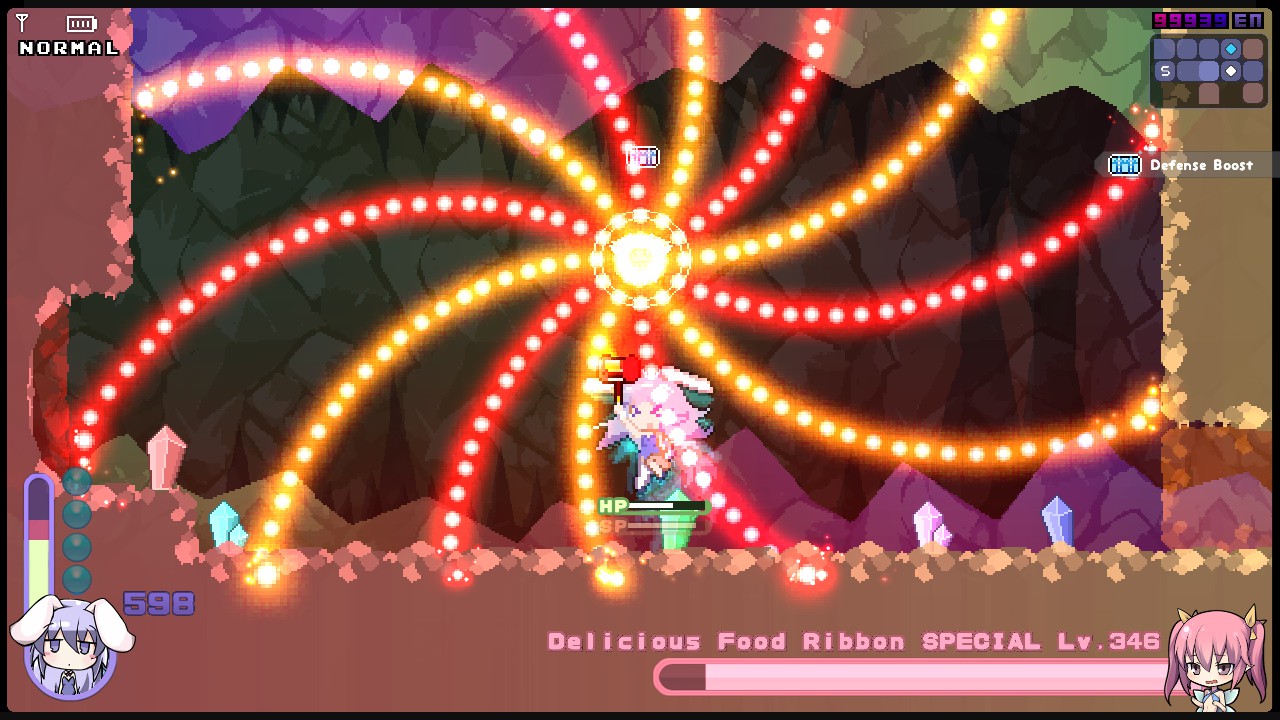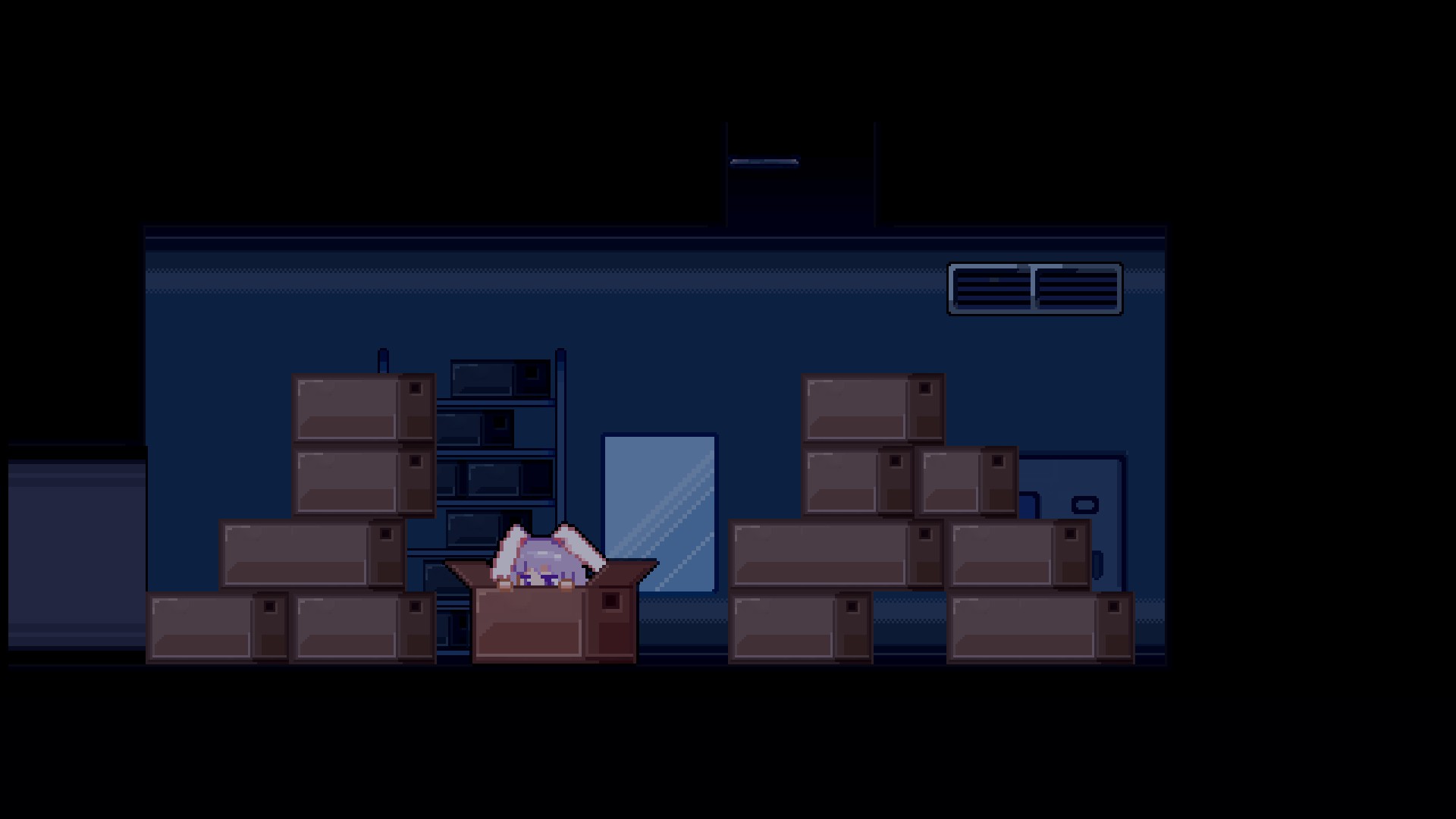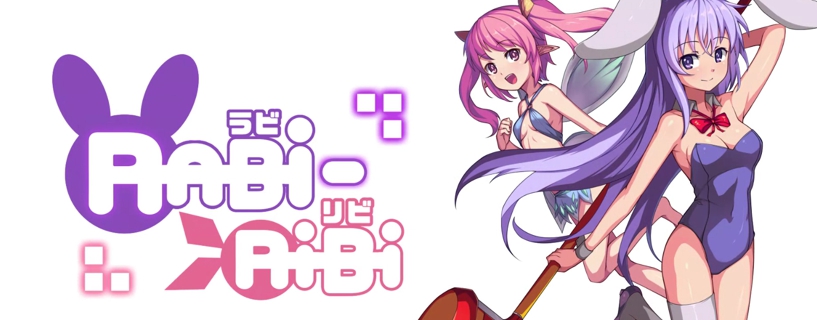Rabi-Ribi is a Metroidvania with strong Bullet Hell elements at its core, so I must admit that while I consider myself a huge fan of the former type of games, I’ve always avoided the latter like the plague.
Type: Single-player
Genre: Metroidvania, Bullet Hell
Developer: CreSpirit, GemaYue
Publisher: Sekai Project
Release date: 28 Jan, 2016


Right from the very start, there are four different difficulty modes available, which should make things a lot easier on people who’re new to bullet hells, like me, while also allowing to keep things fairly challenging for veterans of that genre. With that said, I’m glad that Rabi-Ribi offers so much in terms of customizing the difficulty to fit each person’s own prowess, mostly because, as much as the game looks cute, it is fairly challenging and the Bullet Hell tag on the Store might scare some people off.
In terms of story, the game has a predominant mysterious tone, at least during the first hours of the game, as you try to get your bearings around what’s happening and you slowly start putting two and two together and formulating your own theories about what is really going on. You play as Erina, a bunny who has seemingly transformed into a human, and this is where the game’s plot really takes off and propels itself in order to get the player to chase after whatever is happening on this world. The narrative’s progression did feel like it was a bit slow though, when compared to the actual gameplay, as there were a few times where I was just exploring the game world, doing things, and there wasn’t really anything new happening despite the fact that I was actually progressing in terms of the game itself.

I feel like I can’t stress this enough but, despite the Bullet Hell tag, and the numerous screenshots of the game where you can effectively see what that really means, this is still a Metroidvania at its heart, it just so happens that it incorporates the major principle of Bullet Hell games in its combat. While normal enemies also exhibit this behavior, it’s mostly on the various boss fights that you’ll come across that you can witness the overwhelming numbers of projectiles coming at you. I must admit that at first, I found some boss fights to be rather daunting, but once you learn their attack patterns and find the appropriate moments in which you can strike them, it is really satisfying to watch their health bar go down and finally deliver the killing blow.
The combat system, while certainly enjoyable, takes some time to get used to, or at least it did for me. As soon as you figure out the timings on your attacks, each encounter quickly turns into a very satisfying experience. Erina is only equipped with a hammer as her own weapon, and you have to rely on chaining up multiple hits in order to unleash combos, but each strike costs stamina. There’s also Ribbon, a lovely fairy that follows you around after you befriend her early on the game, and she acts as your ranged weapon. The more you explore the world and acquire upgrades and new abilities, the bigger your roster of moves becomes. From different ranged attacks that can be executed in a rapid manner, to charged ranged attacks that deal more damage, sliding, carrot bombs, and making your enemies fly by striking them upwards, there is quite a decent amount of things that you’ll get to try.

Variety is also one thing that kept me going as I play through Rabi-Ribi, as there are quite a few different areas, and each come along with unique enemy types. Still, I’d say that the game’s map is quite possibly its biggest downside, especially given how big the game world actually is. Given the fact that this is a Metroidvania and given the fact that you’ll be relying on your map to track down previously inaccessible areas, fast-travel spots, and checkpoints, I must say that I found the map to be somewhat confusing and lacking. The game gives you no option to zoom in, thus making it rather hard to tell if you’ve explored a specific zone or if there are any other rooms attached to the ones that you’ve already explored because the borders of each room are hard to distinguish. Not only that, but a few things are marked on the map with very specific icons, but the game doesn’t provide any sort of legend as to what those actually represent, so even after a few hours I was still trying to figure my way around.
Like any other Metroidvania out there, the game pairs its seamless progression with tons of secondary and secret areas that you can delve into in order to find additional upgrades, like increasing your maximum health points or acquiring badges, which are these sort of perks that you can equip that yield specific passive bonuses. There is also a shop in town where you can purchase even more upgrades, and you can get the currency to do so by simply killing enemies. Since enemies respawn every time you enter an area, you can pretty much grind your way to the top, that is if you have the patience to do so.

Verdict
At the end of the day, Rabi-Ribi turned out to be quite a pleasant surprise, mostly because it didn’t end up being as Bullet Hell-ish as I was thinking it would be. The anime art style is certainly going to be a turn off for some people but, if you enjoy Metroidvanias or Bullet Hell games, the game’s mechanics are extremely competent and the game will certainly not let you down. It might not be groundbreaking, it might not be the best in the genre, but this game is certainly a solid one that you should save on your library.










